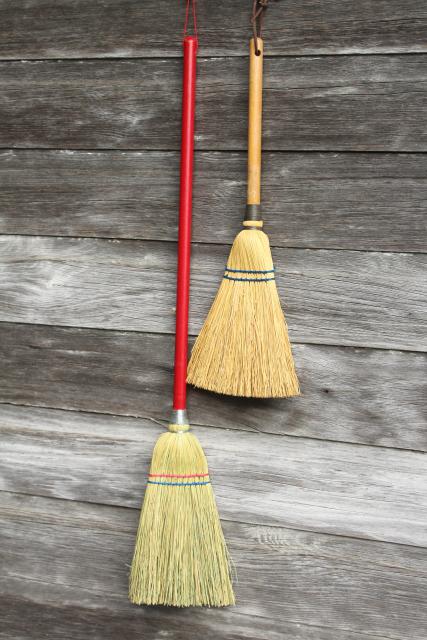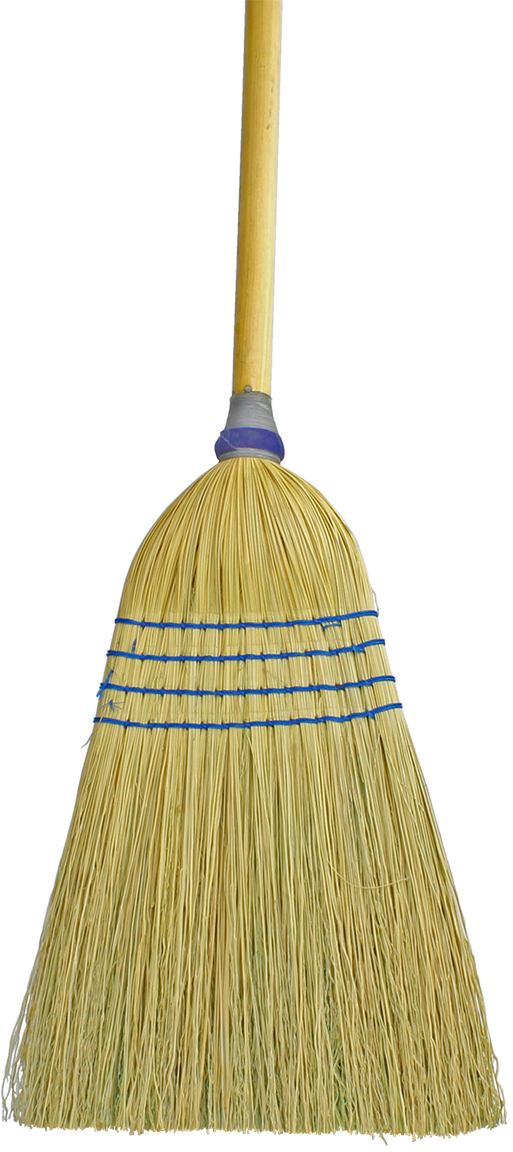


The department name was changed to broomcraft. But the operation wasn’t profitable, so, in the 1930s, the workshop shifted its focus to making small quantities of finely crafted decorative brooms.

At its peak, the workshop was producing more than 100,000 basic floor brooms a year, which were sold in bulk to distributors. In 1920, the college opened the broom making workshop, so that men who were assigned to work the college’s farm would have work to do in the winter. Students soaked the broomcorn in vats of dye. So, it split into two separate colleges, Berea College and the Lincoln Institute. The college appealed the law, all the way to the Supreme Court, but it lost the case. Using Appalachian craft to recruit students became even more important after 1904, when the passage of the Kentucky Day Law, which prohibited the education of black and white students together, forced Berea to segregate. Today, it also includes broomcraft, woodworking and ceramics. And, he recognized that students could learn a lot by keeping the traditions alive.” The student craft program began in 1893, with weaving. “Frost astutely recognized that he could use the marketing of traditional Appalachian crafts as a way to promote the college on fundraising trips to the Northeast, where people were very curious about Appalachia, because it seemed so foreign. from Europe, and there was a tremendous demand for authentically made goods,” says Beale. “The arts and crafts revival was just sweeping into the U.S.

Around the turn of the century, the college’s third president, William Frost, went into the surrounding mountains to recruit students, and he bought traditional crafts, such as weaving and woodworking, from individual households along the way. To this day, every student works ten hours a week, earning them a modest paycheck.
BROOM CORN FOR BROOM MAKING MANUAL
The school’s founders wanted to dignify manual labor, which was associated with slavery. From its inception, the college had a labor program intended to help students cover their expenses. The brooms not only reflect the college’s Appalachian surroundings, but also its remarkable history. (Even today, the poverty rate in Appalachia is higher than in the rest of the country.) At this time, the tuition-free college comprises roughly 1,600 “academically promising students with limited economic resources,” according to its website. Rogers, a first principal of the school, called the area “a neglected region of the country” after a trip through the mountains. From its early days, the college was committed to educating students primarily from Appalachia. The school welcomed men and women, including black men and women, making it the first coeducational and integrated college in the South. Fee believed that education should promote equality and excellence among men and women of all races. “We work at a fever pace to keep up,” Beale says.īerea’s broomcraft workshop is the only in the country to dye significant quantities of broomcorn.īerea College, in Berea, Kentucky, was founded in 1855-it began as a one-room school-by abolitionists Reverend John G. According to Beale, Berea’s broomcraft workshop is the only one in the country to dye significant quantities of broomcorn, which requires a lot of time. “It’s an object rich with meaning, beyond its practical purpose.” The roughly 5,000 brooms made each year at the college are sold through a website and distributed to a number of specialty craft shops. “There’s something very nostalgic and wholesome about a handcrafted broom,” says Aaron Beale, director of student craft at Berea. Celebrating its centennial this year, the program carries on an American craft tradition that’s rarely practiced today. Coveted by craft aficionados, these brooms are decorative objects, worthy of being hung on a wall.īerea is a liberal arts college, not a craft or art school, but nonetheless students there make brooms by hand, in the country’s longest continuously operating broomcraft workshop. Some are made with corn that’s been dyed a fiery red or deep purple, and often there’s intricate braiding where the bristles connect to the handle. The brooms that are made at Berea College, in the Appalachian Mountains of Kentucky, aren’t just for sweeping-as anyone can tell just by looking at them.


 0 kommentar(er)
0 kommentar(er)
